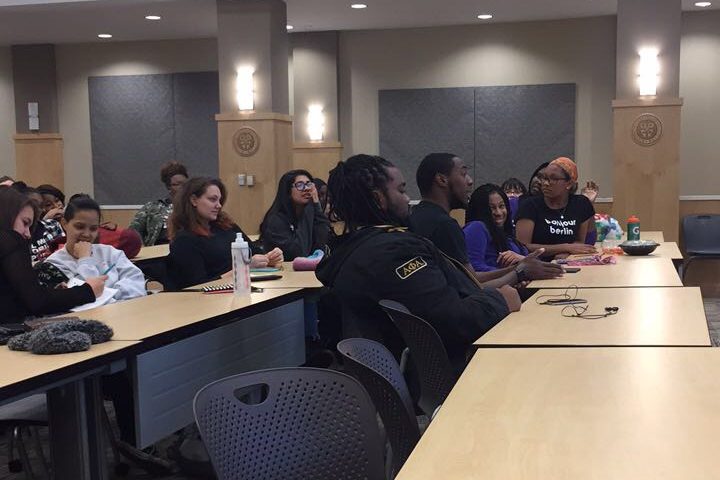Recently, Capital students such as Mark Hameed, Kelvin Lawrence, and alumni student Jalen Pompey were stopped and asked to present identification after calls were made about suspicious individuals on campus.
“I was just getting off work and I decide to sit at the fountains and chill for a second when all of a sudden Public Safety comes up to me and asks for my ID,” Pompey said. “At first I felt real scared, like I done something wrong, but they said they received a call of a suspicious person. Now, I don’t know if it was because most of my work uniform was all black or what, but I felt offended.”
When confronted, Public Safety asked if he was a student at Capital, and he explained that, while he is on leave of absence, he works in the MDR and One Main. After he explained that, they returned his ID to him and told him to have a nice day.
“I really felt like whoever made that call was very ignorant, and I just felt like I was being racially profiled or something,” Pompey said. “Now, I can say Public Safety was calm and collected throughout the encounter, but it just really scared me for a second.”
Even more, events like this take place every day in the world. This can be seen in the more aggressive form of stop and frisk.
According to the Law Information Institute at Cornell University, “The Fourth Amendment requires that the police have a reasonable suspicion that a crime has been, is being, or is about to be committed before stopping a suspect. If the police reasonably suspect the person is armed and dangerous, they may conduct a frisk, a quick pat-down of the person’s outer clothing.”
Stopping “suspicious-looking” young, black males has been trend in America for centuries. Ideas of false suspicion have led to the many deaths of young black men and women that only lead us to create hashtags in their honor.
Public Safety has mentioned they do not know the reasoning behind these calls, and they are trying to work on a possible solution. Also, there have been alleged talks with Public Safety and the Office of Diversity and Inclusion to bridge the gap between Public Safety and students of color.
To bridge this said gap between students of color and Public Safety, there was a community event held Thursday, Nov. 10. There was an overwhelming turnout of students, faculty and staff that wanted to have this conversation.
To start off, everyone was split off into groups and everyone, including Public Safety officers, had to move around to a table where they didn’t know someone.
The officers were put at different tables to engage with some of the students and general body of the Capital community. There were various small discussions all over the room and some of the topics brought up were cameras, diversity training, cap alerts, the safety bulletin, transparency with information, more engagement between officers and community, extensive training and Bexley police officer outreach.
Still, when it comes to the topic of suspicious activity and the connection with black students, Public Safety Police Chief Frank Fernandez said, “There is no protocol for a caller about suspicious activity; we get a lot of calls about suspicious activity. Basically, what we focus on is what they are doing …”
When asked about possible racial bias, he went to say, “I don’t think color has anything to do with it; for me, it’s more centered around what the student is doing, not what their race is.”
This community conversation was a great stepping stone to a brighter future between Public Safety and the campus community, this hopefully being the start of many more in-depth dialogues between both the Capital student body and campus police.
The Campus Democrats also teamed up with the Office of Diversity and Inclusion this past Monday for a Black Lives Matter conversation. The purpose of the talk was to break all the misconceptions about the Black Lives Matter movement and have community dialogue between all different kinds of students. It started with a breakdown of what Black Lives Matter was and why the movement was important.
The conversation became a teaching moment for many non-minority students on how to be allies, what to say to parents who might have racist or misunderstood views, and one of the most controversial topics of the n-word and who can and can’t say it. Talks and conversations like this have been very prevalent due to a crying out among the Capital community after one of the most publicized elections to date.
Conversations such as these lead to actions, like the Unity Walk that took place this Tuesday, that not only bring us together, but actually take the steps toward the equality we all desire.

